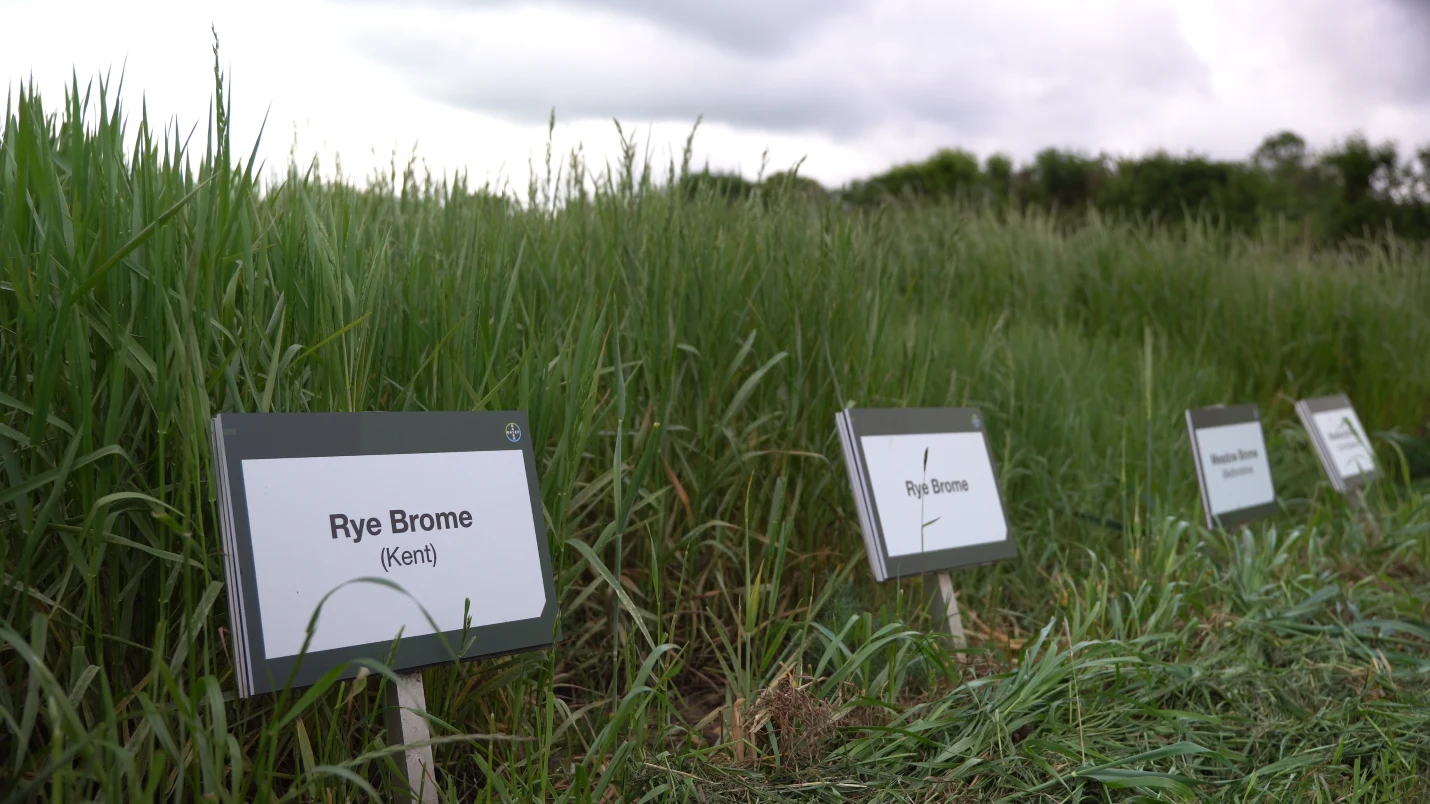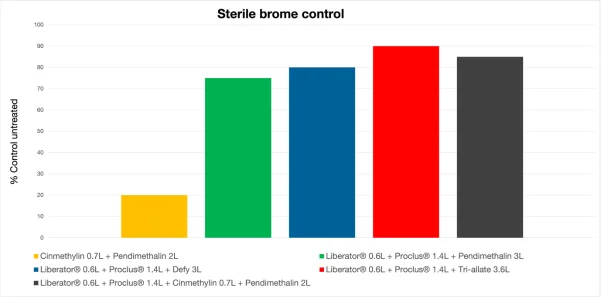
Author
Bayer Crop Science | 14th August 2025Tags
We Highly Recommend:
Herbicides
Alternator Met
Alternator Met is an effective tool for weed control in winter barley and winter wheat. Suitable for use at pre-emergence and as a residual top up.
Read moreHerbicides
Cadou Met
A contact and residual herbicide for pre and post-crop emergence use against a range of annual grasses and broad- leaved weeds in winter wheat and winter barley.
Read moreHerbicides
Octavian Met
Octavian Met controls grass-weeds and broad-leaf weeds in winter wheat and barley crops. It is suitable for pre-em and early post-em use. Containing three actives, it provides high levels of control.
Read moreRethinking our approach to brome control
Updating our approach to brome control
Effective brome control is becoming increasingly important as more farms are suffering from brome problems. Less cultivation and less use of spring post-em. chemistry amongst other factors are giving more opportunities for brome to thrive.
As brome becomes a more significant weed, we need to learn more about it. The species mix, germination patterns and responses to cultivation are all things that we don’t understand as well as we thought as ADAS weed scientist John Cussans explain.
“What we are seeing is the relative of abundance of different brome species shifting over time. In the Bromus species (soft brome, rye brome and meadow brome), rye brome is fast becoming the main problem whereas this species was relatively rare in the past. In the other Anisantha family, there is a massive shift towards great brome from sterile brome. The shift is probably caused by weed management selecting for the harder species to control which are great brome and rye brome.”
Great brome and sterile brome are winter annuals, most of their germination is in autumn so focus control around the pre-em. timing much as you would do with black grass. Making sure that the chemistry you use has activity on brome.
Rye brome, soft brome and meadow brome germinate 50/50 between autumn and spring. They have high potential seed return in spring crops, and any herbicide programme needs to activity in both autumn and spring.
“Cultivation is one area which we are starting to approach differently. There was an established understanding that species had a different response to light so you could control sterile and great brome by cultivating after harvest, and delayed cultivation for the other species.”
“Recent work following a brome survey and a re-evaluation of the initial work that led to this understanding of light and cultivation is calling this into question. There are populations where we see a light response, but the vast majority don’t have this.”
“Focus on conditions post-harvest to decide on the best strategy. If it’s really dry post-harvest, leave weed seeds on the surface which increases mortality and predation. Once there is some moisture in the seedbed and soil surface, the optimum approach is a very superficial cultivation to increase seed to soil contact and weed germination which can be controlled before drilling.”
Effective control strategies
Bayer Agronomist Jamie Oakley agrees that there is more to learn about brome but points out that we have the tools to control it in the field, provided we treat it with the same urgency as black grass and Italian rye-grass.
Ploughing is a very effective cultural control because brome species have a relatively short life span in the soil. With proper inversion 95% of freshly-shed seed is buried but it can bring up old seed, so it needs to be done rotationally; 3 years minimum but ideally with longer periods between ploughing.
Some farmers may be reluctant to plough because they have a long-term strategy to improve soil health. In these situations, Jamie recommends looking at the bigger picture.
“One year of ploughing doesn’t undo several years of work improving soil health and can make a huge difference to brome control. Weed control always requires pragmatism and we know that relying exclusively on herbicides is not the way to go. Selective cultivation of headlands to stop ingress might be a good option if ploughing the whole field is not an option.”
There are good herbicide options for brome in autumn and spring post-emergence applications. Liberator or a metribuzin co-form like Alternator® Met, Cadou® Met or Octavian® Met with Proclus® are a good option at pre-em. If you are going for a split programme, metribuzin also works well at the top up timing against brome. Where you expect spring germinating bromes, plan to use Atlantis® Star or Pacifica® Plus.
“Against brome, flufenacet in Liberator or a metribuzin co-form superior to a cinmethylin based programme as shown by trials at the Chishill weedscreen.”

Source: Bayer Chishill Weedscreen 2023
-----
Alternator® Met contains metribuzin, flufenacet and diflufenican. Atlantis® Star contains mesosulfuron, iodosulfuron and thiencarbazone. Cadou® Met contains flufenacet, diflufenican and metribuzin. Liberator® contains flufenacet and diflufenican. Octavian® Met contains metribuzin, flufenacet and diflufenican. Pacifica® Plus contains mesosulfuron, iodosulfuron and amidosulfuron. Proclus® contains aclonifen. Alternator®, Atlantis®, Cadou®, Liberator®, Octavian®, Pacifica® and Proclus® are Registered Trademarks of Bayer. All other brand names used are Trademarks of other manufacturers in which proprietary rights may exist. Use plant protection products safely. Always read the label and product information before use. Pay attention to the risk indications and follow the safety precautions on the label. For further information, including contact details, visit www.cropscience.bayer.co.uk or call 0808 1969522. © Bayer Crop Science Limited 2025.
We Highly Recommend:
Herbicides
Alternator Met
Alternator Met is an effective tool for weed control in winter barley and winter wheat. Suitable for use at pre-emergence and as a residual top up.
Read moreHerbicides
Cadou Met
A contact and residual herbicide for pre and post-crop emergence use against a range of annual grasses and broad- leaved weeds in winter wheat and winter barley.
Read moreHerbicides
Octavian Met
Octavian Met controls grass-weeds and broad-leaf weeds in winter wheat and barley crops. It is suitable for pre-em and early post-em use. Containing three actives, it provides high levels of control.
Read more